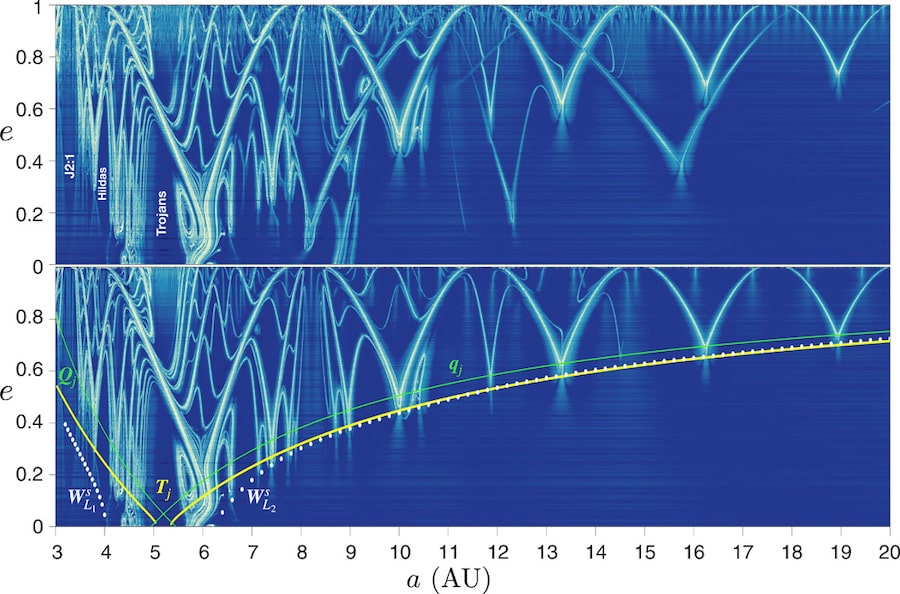In a stunning article, astronomers describe the discovery of invisible structures generated by gravitational interactions within the Solar System. They could act as a network of “space highways”, allowing the rapid movement of objects. The structures could be exploited for our space exploration missions as well as for the study of asteroids and comets.
A team of researchers led by Nataša Todorović of the Belgrade Astronomical Observatory in Serbia, found after an analysis of observation and simulation data, that these “highways” consist of a series of arches connected inside invisible cosmic structures, called “space collectors”. Namely, astronomers have discovered in the past that each planet generates its own collectors, together creating what researchers now call a “celestial highway”. The results of the study were published in the journal Science Advances.
This network can transport objects from Jupiter to Neptune in a few decades without any propulsion, rather than the few hundred thousand to millions of years normally required. Identifying structures hidden in space is not straightforward, but observing how objects move – especially comets and asteroids – can provide useful clues.
There are several groups of rocky bodies at different distances from the Sun: comets of the Jupiter family (JFC for ” Jupiter-family Comets »), Or those which have an orbit of less than 20 years and which do not go further than the orbital trajectories of Jupiter; centaurs, chunks of icy rock that lie between Jupiter and Neptune; and the transneptunian objects (TNO), which are located at the edge of the solar system, with orbits larger than that of Neptune.
To model the trajectories connecting these areas, as the NWT moves into the centaur category and eventually becomes JFCs, the timescales required range from 10,000 to one billion years. But a recent article identified an apparently much faster connected “orbital gate” to Jupiter, governing the paths of the JFCs and the Centaurs.
Space highways generated by gravitational interactions
Although this article does not mention Lagrange points (a position in space where the gravity fields of two bodies provide exactly the force required for this point to simultaneously accompany the orbital motion of the two bodies. a third body, of negligible relative mass, it would remain motionless compared to the other two), we know that these regions of relative gravitational stability, generated by the interaction between two bodies in orbit (in this case Jupiter and the Sun), can generate collectors.
That’s why Todorović and his team set out to find out more. To do this, they used a tool called the Lyapunov Rapid Indicator (FLI), which is usually used to detect what is called chaos. Since chaos in the solar system is related to the existence of stable and unstable collectors, over short periods of time the FLI can detect traces of collectors, both stable and unstable, from the dynamic model to which it is applied.
« Here, we use the FLI to detect the presence and overall structure of space collectors, and to detect instabilities that act on orbital time scales; that is, we use this sensitive and well-established digital tool to more generally define regions of rapid transport within the solar system », Write the researchers in their article. They collected digital data from millions of orbits in the solar system, and calculated how those orbits fit to known collectors, modeling the disturbances generated by seven large planets, from Venus to Neptune.

The researchers also found that the most prominent arches, at increasing heliocentric distances, were related to Jupiter, and more strongly to its Lagrange point collectors. All Jovian close encounters, modeled using test particles, took place near Jupiter’s first and second Lagrange points.
A few dozen particles were then thrown onto the planet on a collision course, but many more, around 2,000, broke away from their orbit around the Sun to enter hyperbolic escape orbits. On average, these particles reached Uranus and Neptune 38 and 46 years later, respectively, with the fastest reaching Neptune in less than a decade. The majority (about 70%) reached a distance of 100 astronomical units (the average orbital distance of Pluto is 39.5 astronomical units) in less than a century.





